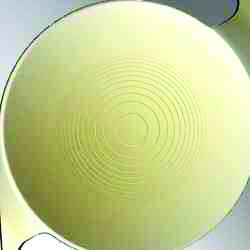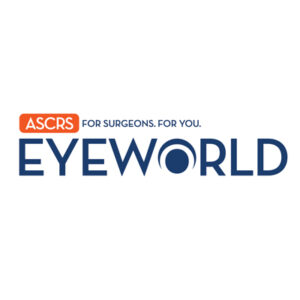For a more recent article on this topic, see “Improvements in presbyopia-correcting IOLs continue.”
Cover Feature: Presbyopia
February 2008
by Enette Ngoei
EyeWorld Staff Writer
Ever since their conception, multifocal intraocular lenses (IOLs) have been measured against their predecessor, monofocal lenses. With the appearance of accommodating lenses on the market in recent years, inevitable comparisons are now being drawn between multifocal lenses and the latest advancement in IOL technology. EyeWorld takes a look at the pros and cons of the lenses.
A big advantage of multifocal lenses, said Stephen G. Slade, M.D., Houston, is that the ReSTOR lens (Alcon, Fort Worth, Texas) has the best near vision of any of the lenses. Jeffrey D. Horn, M.D., Nashville, agreed, “The ReSTOR is definitely the best near vision lens on the planet.”
However, Dr. Slade said, “The disadvantage [of multifocal lenses] is that some patients, not very many, but some have problems with the quality of vision, either glare or halos or they describe waxy vision or things like that.”
Paul J. Dougherty, M.D., clinical instructor of ophthalmology, Jules Stein Eye Institute, University of California at Los Angeles, said of the two multifocals, his preferred lens is the ReSTOR Aspheric because it tends to be the most effective at eliminating the need for glasses for distance and near. “Typically who I use the multifocal ReSTOR for patients who are most motivated to eliminate their need for reading glasses and who don’t do a lot of night driving. The other thing I like about it is they’re not pupil dependent and slight decentrations don’t seem to affect the performance of the lens,” Dr. Dougherty said.
“Since I’ve been starting to use the Aspheric lens I’m actually finding that I’m starting to get better night vision than I had with the standard ReSTOR.” There are however, some patients who complain a little bit about their intermediate vision, that is, their reading point is a little too close, he said.
Dr. Horn, on the other hand, who often implants the ReSTOR Aspheric bilaterally, said that he started noticing that the ReSTOR might actually be good enough for some of those patients needing intermediate vision. He said he had a patient who had a ReSTOR lens in one eye and was getting the Crystalens in the other eye. The patient was a minister who needed to have excellent intermediate vision because he stands at a podium to speak and is on the computer often. Dr. Horn described, “I noticed when I was sitting talking to him that he was reading a list of questions but the questions were on his lap. And he wasn’t holding them up close. And I saw that he was reading them with his ReSTOR eye that I had just operated on because his other eye was still hyperopic so he couldn’t have been reading it with that eye. “So I just made the decision in him to just go ahead and put in the ReSTOR bilaterally and he is absolutely ecstatic he’s never worn glasses since and he can see everything.” What Dr. Horn does now is to put in the Aspheric ReSTOR first, see how the patients do with their intermediate vision and if they were happy with it, he implants the ReSTOR bilaterally.
On occasion, Dr. Dougherty said he uses the ReZoom (Advanced Medical Optics, Santa Ana, Calif.). “I typically use it in the dominant eye of patients [who I have] put a ReSTOR in the first eye or the non-dominant eye, [and] they feel the reading is just too poor because [the ReZoom] tends to give a little better intermediate vision,” he said. The downside to the lens though, Dr. Dougherty, said is that he’s had more issues with glare with the ReZoom than he’s had with the ReSTOR. He has also had some problems with its pupil dependence so patients with smaller pupils seem not to get much effect, he said.
Be-spectacled or not to be
With accommodating lenses, Dr. Slade said: “The disadvantage is that we can’t tell people that they’re going to have perfect glasses-free vision. Some of them don’t wear glasses but I don’t want to promise that. “The advantage to the accommodating lens and the reason why we wind up doing mostly Crystalens (eyeonics, Aliso Viejo, Calif.) [in my practice] is that I don’t see a downside to the Crystalens compared to a normal IOL.”
Dr. Slade, who was the first surgeon in the U.S. to insert the Crystalens as well as the medical director involved in attaining Food & Drug Administration (FDA) approval of the lens, explained: “I don’t think there’s any downside in terms of risk or decreased quality of vision or anything compared to us using the very best monofocal IOL. And you may get a good percentage of people who will get a reduced dependence upon glasses.”
Although multifocals offer a good chance of patients not needing to wear glasses, Dr. Slade said, “You might wind up with some quality of vision issues that you would not wind up with the monofocal.” He conceded, however, that the ReSTOR Aspheric seems to be designed to address that quality of vision issue and results from his practice as well as others’ seems to be better than the regular multifocals, he said. The Crystalens gives the best quality vision at distance and it gives very good intermediate vision, he added.
While Dr. Horn agrees that the Crystalens gives good quality vision, he said, “The problem with the Crystalens is that it’s not as predictable in terms of the refractive outcome and you can aim for a certain refractive power and end up with something that’s different. Though the original Crystalens 4.5 did have some predictability issues, Dr. Slade said “Since they’ve gone to the 5.0 optic and changed the lens haptics, we’ve recently looked at hundreds of cases in the data registry and it turns out that the accuracy of the Crystalens, the predictability is as good as the typical monofocal.”
The Tetraflex (LensTec, St. Petersburg, Fla.), which is in Phase III of the FDA clinical trials, is Dr. Dougherty’s preferred accommodating lens. “With this lens I get on average about 2.0 diopters of accommodation, with some patients getting up to 3. It’s got a large optic, 5.75mm, so I don’t have issues with glare with the lens and I find that of the two accommodating lenses, [it is the easier one] to put in.
Dr. Dougherty, principal investigator in the FDA trials, said that there are no issues with anterior vaulting, unlike the Crystalens since the Tetraflex is a 5 degrees anteriorly vaulted accommodating lens that works by contraction of the ciliary muscles to increase vitreous pressure. The other thing Dr. Dougherty said he likes about the lens is that because there’s a known distance from the optic to the focal point as it does not have hinges, his lens calculations are identical to what he would get with a standard monofocal lens. “So basically it is identical distance-wise to a monofocal lens with the benefit of intermediate and reading,” he said.
The main downside, Dr. Dougherty said is the variable accommodation of the lens, “I find everyone gets the intermediate and most patients get near but it’s variable in terms of axial length, so I do occasionally have patients who need reading glasses particularly for low lighting and low-contrast print. But virtually everyone gets vision good enough after binocular implantation to read newspaper print.”
There is currently no perfect, one-size-fits-all lens and because each lens has its own specific characteristics, surgeons still say that careful patient needs assessments are important to find the right lens for each patient.
Editors’ note
Dr. Slade has financial interests with eyeonics (Aliso Viejo, Calif.). Dr. Horn has financial interests with Alcon (Fort Worth, Texas). Dr. Dougherty has financial interests with Alcon and Lenstec (St. Petersburg, Fla.).
Contact information
Dougherty: 805-987-5300, pjdmd2002@yahoo.com
Horn: 615-329-9575, jeff.horn@bestvisionforlife.com
Slade: 713-626-5544, sgs@visiontexas.com






